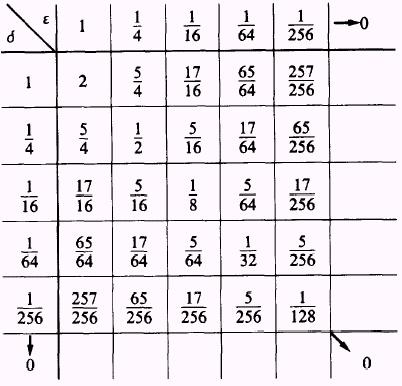

There one of the key figures is Thomas Hobbes, the 17th-century philosopher of authoritarianism, a strong advocate of law, order - and, like the Jesuits, of the top-down hierarchical nature of Euclidean geometry. Alexander’s finely detailed, dramatic story traces their subsequent history north to England. Since the Jesuits succeeded in banning infinitesimals in Italy, the last part of Dr. Jerome Keisler, my adviser at the University of Wisconsin.

One exception is a recent reconstruction of infinitesimals - positive “numbers” smaller than every real number - devised by the logician Abraham Robinson and developed further by H. No one talks of infinitesimals any more: The modern notion of limits accomplishes everything they did, but much more rigorously. Formulas for the areas and volumes of geometric figures were surprisingly easy to obtain using this principle, which was a precursor of integral calculus. It’s intuitive that the towers have equal volume, and would even if the coins were “infinitely thin” and the towers leaned and twisted every which way. Cavalieri’s principle, for example, states that if two solids are included between parallel planes and cross-sections of these two solids at every height have equal areas, then the solids have the same volume.Ĭonsider, for example, two towers of coins, one straight, the other of equal height but with the coins sticking haphazardly out the sides. They include the priest Christopher Clavius and his mathematical work on the new Gregorian calendar, and the relentless Jesuit censors and the dead weight they finally succeeded in placing on Italian mathematics by proscribing infinitesimals.Īlong the way there are striking geometric insights that buttress the case for infinitesimals. Most of the book is devoted to the interrelated stories of many leading mathematical/religious figures during these tumultuous early modern times. To the Jesuits, tradition, resoluteness and authority seemed bound up with Euclid and Catholicism chaos, confusion and paradoxes were associated with infinitesimals and the motley array of proliferating Protestant sects. The Reformation was one part of the answer another was the Jesuits, the Roman Catholic order of the Society of Jesus, whose intellectual rigor and allegiance to the papacy made them a bulwark against Protestant advances. For example, just as a piece of cloth can be considered a collection of parallel threads and a book a collection of pages, so too might a plane be considered an infinite number of parallel lines and a solid an infinite number of parallel planes. If classical Euclidean geometry is conceived as a top-down approach with all theorems following by pure logic from a few self-evident axioms, the new approaches can be thought of as bottom-up, inspired by experience. The mathematicians, Cavalieri, Torricelli, Galileo and others, were at the forefront of the new geometric approaches involving infinitesimals. Alexander (an occasional book reviewer for Science Times) vivifies the era and the fault lines that the mathematical dispute revealed. Huh? It’s natural to wonder how such a seemingly arcane issue could possibly arouse much passion.


 0 kommentar(er)
0 kommentar(er)
